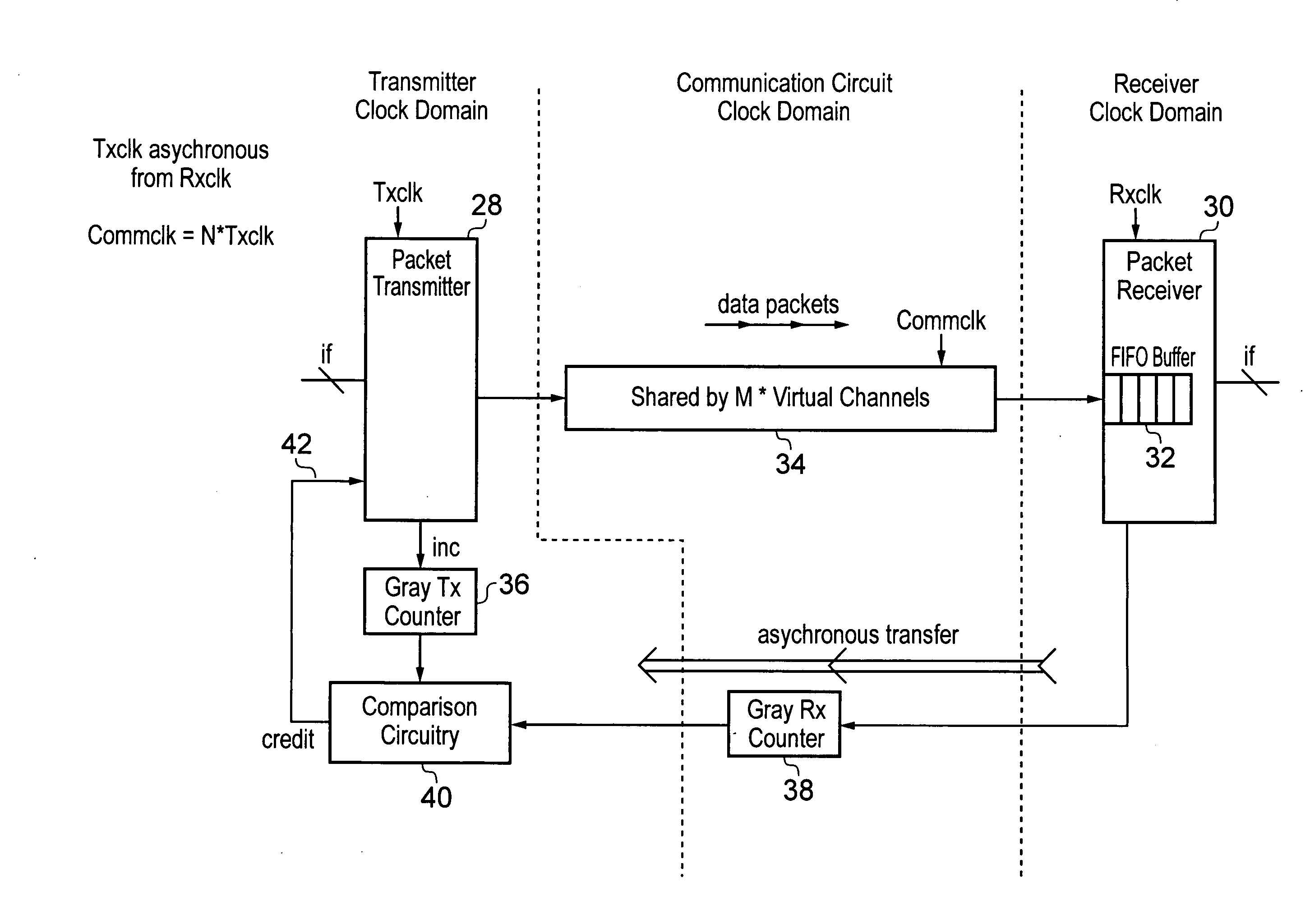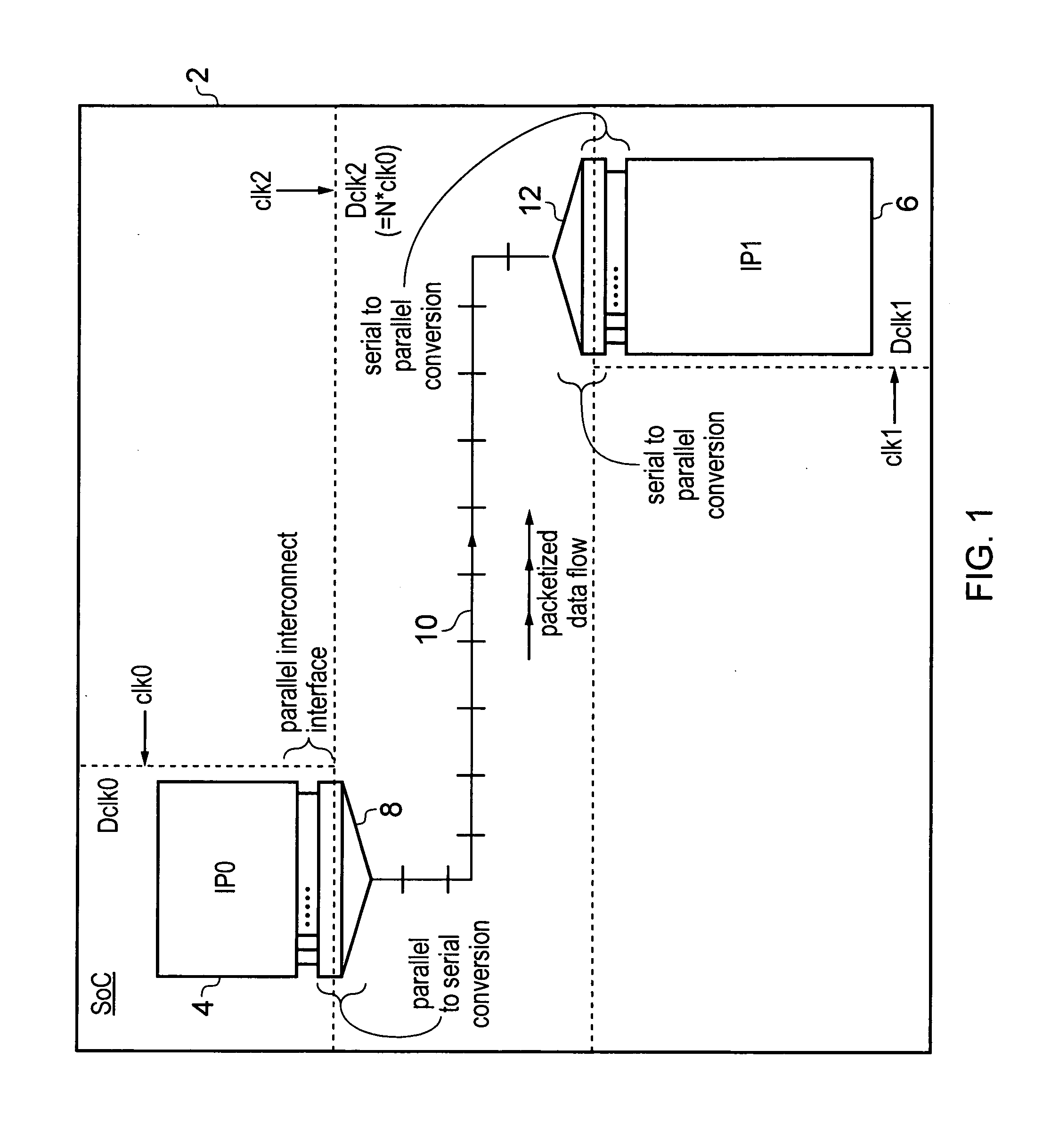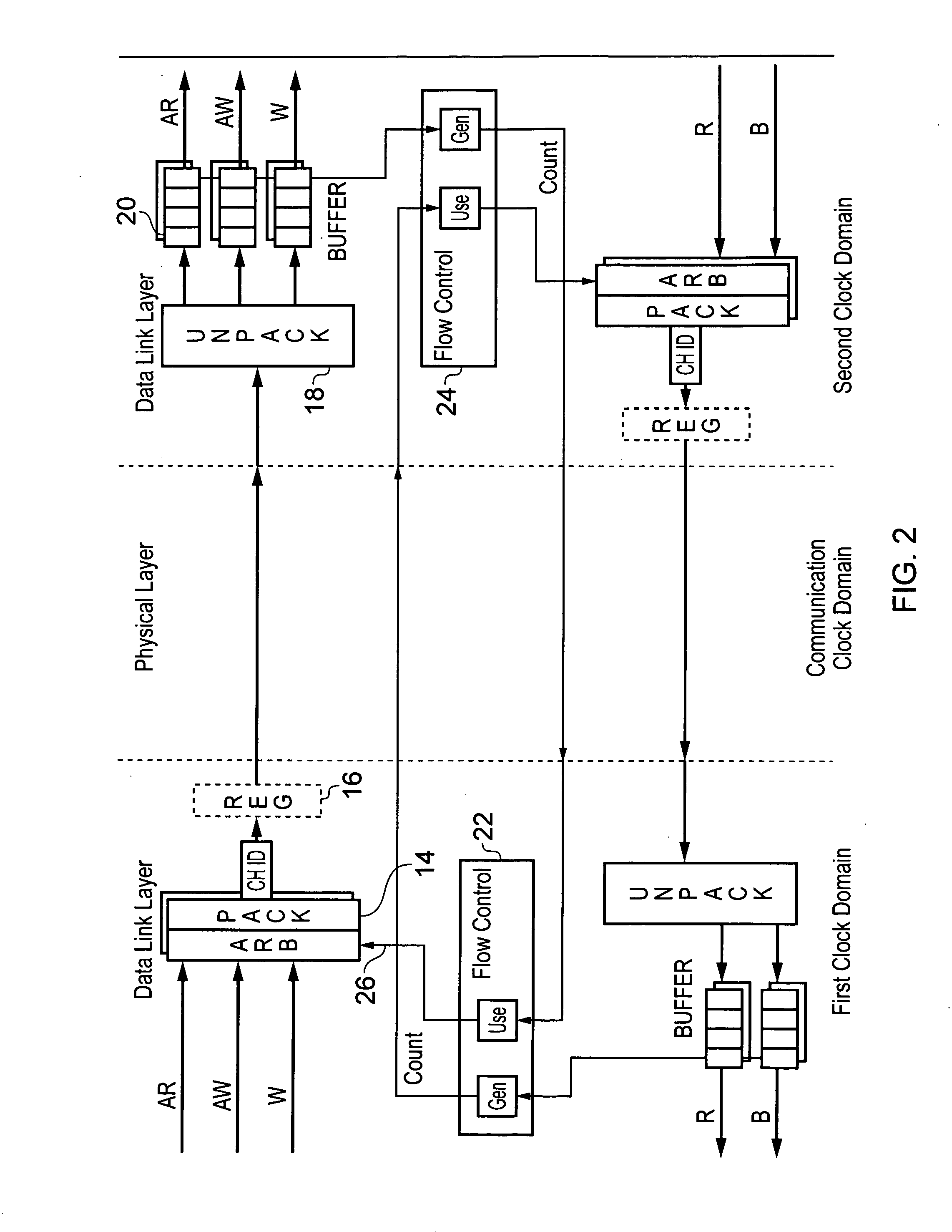Data packet flow control across an asynchronous clock domain boundary
- Summary
- Abstract
- Description
- Claims
- Application Information
AI Technical Summary
Benefits of technology
Problems solved by technology
Method used
Image
Examples
Embodiment Construction
[0071]FIG. 1 schematically illustrates a system-on-chip integrated circuit 2 including a source functional block 4 and a destination functional block 6 between which it is desired to pass signals. The source functional block 4 and the destination functional block 6 can take a variety of different forms, e.g. a processor core, a graphics processing unit, a memory controller, an input / output controller, a memory controller etc. Such functional blocks 4, 6 are conventionally provided with a parallel interconnect interface, such as an AXI interface as designed by ARM Limited of Cambridge, England. Such a parallel interconnect interface is wide and may include several hundred bit line signals. In order to efficiently transfer the signals from this wide parallel interconnect interface across the system-on-chip integrated circuit, the present technique uses parallel-to-serial conversation which converts the parallel interconnect interface signals into a plurality of data packets. This conv...
PUM
 Login to View More
Login to View More Abstract
Description
Claims
Application Information
 Login to View More
Login to View More - R&D
- Intellectual Property
- Life Sciences
- Materials
- Tech Scout
- Unparalleled Data Quality
- Higher Quality Content
- 60% Fewer Hallucinations
Browse by: Latest US Patents, China's latest patents, Technical Efficacy Thesaurus, Application Domain, Technology Topic, Popular Technical Reports.
© 2025 PatSnap. All rights reserved.Legal|Privacy policy|Modern Slavery Act Transparency Statement|Sitemap|About US| Contact US: help@patsnap.com



